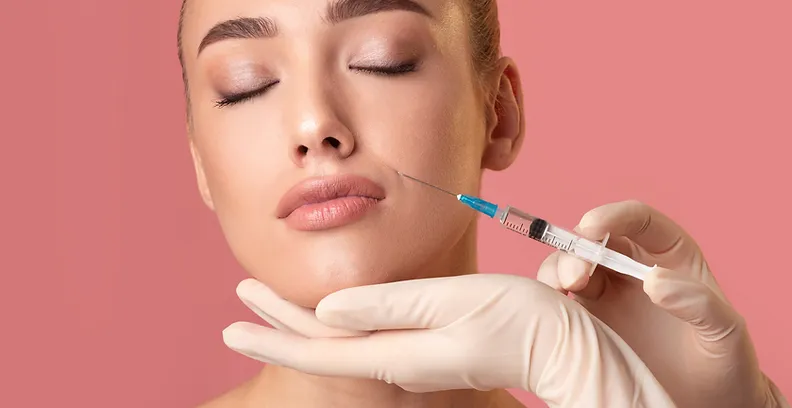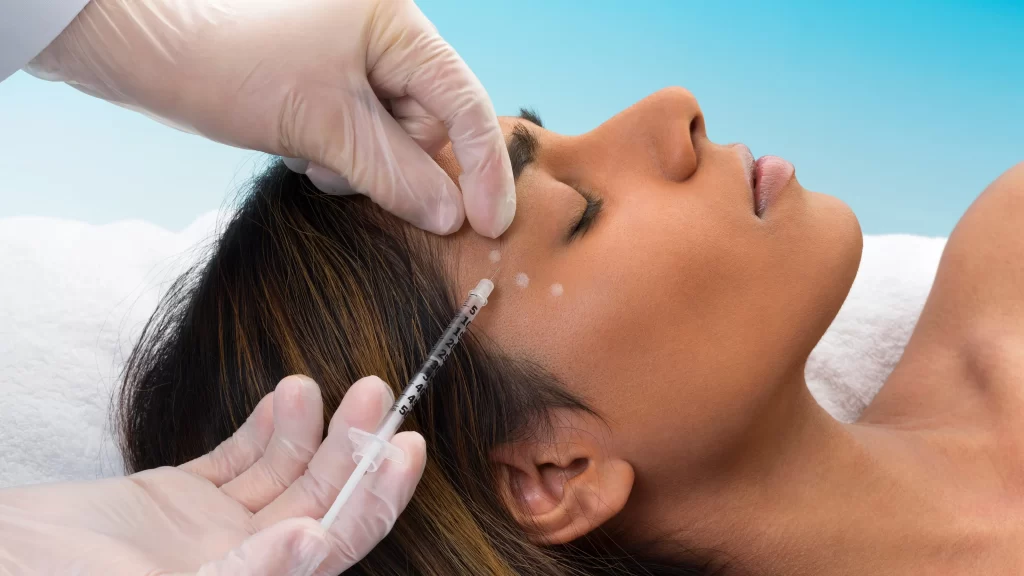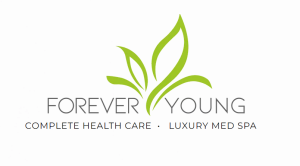

Best Botox Treatment in Edison, New Jersey
Looking for best Botox treatment in Edison, New Jersey? Forever Young Healthcare is the leading med spa offering the best treatment. Botox, a neurotoxin protein, has been used for years to treat various medical conditions, including muscle spasms, excessive sweating, and migraines. However, in recent years, Botox has become popular in the cosmetic industry as a non-invasive treatment to reduce wrinkles, fine lines, and facial creases.
Non-invasive Best Botox treatment in Edison, New Jersey, involves injecting small amounts of Botox into the facial muscles to relax them temporarily. As a result, it reduces the appearance of wrinkles and fine lines, making your skin appear smoother and younger. Unlike invasive treatments such as plastic surgery, non-invasive Botox treatment requires no incisions or general anesthesia. The science behind Botox involves the use of botulinum toxin, a naturally occurring protein that is derived from the bacterium Clostridium botulinum. Botulinum toxin has been used for various medical and cosmetic purposes for over four decades.
How Botox Works:
Non-invasive Best Botox treatment works by using a purified form of botulinum toxin to relax the muscles responsible for causing wrinkles and fine lines on the face. The botulinum toxin used in Botox treatments is derived from the bacterium Clostridium botulinum.
When injected into the targeted muscles, the botulinum toxin blocks the release of a neurotransmitter called acetylcholine. This neurotransmitter is responsible for sending signals from the nerves to the muscles, instructing them to contract. When acetylcholine is blocked, the muscles are no longer able to contract as strongly or as frequently, resulting in a smoothing effect on the skin’s surface. The actual process is simple and fairly quick. An extremely fine needle is used to inject a small quantity of Botox into the targeted muscles. The number of chemicals required depends on the area being treated and the severity of the wrinkles. The injections are usually well-tolerated, and any discomfort can be managed with a topical anesthetic or ice.
Benefits of Botox Treatment
- Reducing the appearance of wrinkles and fine lines: Non-invasive Botox injections can help reduce the appearance of wrinkles and fine lines on the face, including crow’s feet, forehead lines, and frown lines.
- Lift the eyebrows: Non-invasive Botox injections can help lift the eyebrows and create a more youthful, rested appearance.
- Forehead Lines – Botox help to reduce creases or wrinkles t hat develop on the forehead due to facial expressions, aging, and sun damage. Botox can be an effective way to smooth out forehead lines and create a more youthful, rested appearance.
- Control excessive sweating: Non-invasive Botox injections can help control excessive sweating; a condition known as hyperhidrosis. The injections are typically administered to the underarms, palms, and feet.
- Frown Lines – Are the vertical lines that develop between the eyebrows due to repeated facial expressions, aging, and sun damage. Botox can be an effective way to smooth out frown lines and create a more youthful, rested appearance.
- Reduce jaw tension: Non-invasive Botox injections can help reduce tension in the jaw muscles, which can be beneficial for individuals who grind their teeth or suffer from temporomandibular joint (TMJ) disorder.
- Smooth neck bands: Non-invasive Botox injections can help smooth the appearance of neck bands or cords, which can develop as a result of aging or genetics.
Conditions Treated with Botox
Botox, or botulinum toxin type A, is a versatile treatment that has a variety of medical and cosmetic uses. Here are some of the different types of conditions that Botox can be used to treat:
Cosmetic uses: Botox is commonly used for cosmetic purposes to reduce the appearance of wrinkles and fine lines on the face, including forehead lines, frown lines, and crow’s feet.
Hyperhidrosis: Botox can be used to treat excessive sweating, a condition known as hyperhidrosis. As acetylcholine, a neurotransmitter, is blocked from releasing when Botox is injected into the sweat glands, sweat production is decreased.
Muscle spasms: Botox is used to treat muscle spasms and involuntary contractions, such as those associated with cervical dystonia, a condition that causes neck pain and abnormal head positioning.
Overactive bladder: Botox can be injected into the bladder muscle to treat symptoms of overactive bladder, such as frequent urination and urinary urgency.
Strabismus: Botox is used to treat strabismus, a condition in which the eyes do not align properly. It works by weakening the muscles that control eye movement, allowing the eyes to realign.
Blepharospasm: Botox is used to treat blepharospasm, a condition in which the eyelids twitch or spasm involuntarily.
Who Can Benefit from Botox Treatment? Factors That Make a Good Candidate
Botox treatment is used by a wide range of individuals for both medical and cosmetic purposes. Here are some examples:
Individuals seeking to reduce the appearance of wrinkles and fine lines on the face.
Those who experience recurrent tension headaches or migraines.
People who experience excessive sweating (hyperhidrosis).
Individuals with muscle spasms or contractions, such as those caused by cervical dystonia or cerebral palsy.
Those with overactive bladder, urinary incontinence, or difficulty urinating.
People with strabismus or other eye alignment issues.
Individuals with eyelid twitching or spasms (blepharospasm).
It’s important to note that Botox treatment is not suitable for everyone. Pregnant or breastfeeding women, as well as individuals with certain medical conditions, may not be eligible for treatment. Before getting Botox, it’s crucial to talk with a licensed healthcare provider about the procedure’s advantages and disadvantages.
Botox Treatment Tips and Advice
The Botox treatment process typically involves the following steps:
Consultation: The first step in the Botox treatment process is to schedule a consultation with a qualified healthcare professional, such as a dermatologist or other specialist. In order to decide whether Botox is a suitable treatment option, the healthcare provider will consider the patient’s medical history, present health condition, and aesthetic concerns during the consultation.
Preparation: Before the procedure, the healthcare professional may ask the individual to avoid taking certain medications, such as blood thinners, that could increase the risk of bleeding or bruising. The treatment area will be cleaned and marked, and a topical numbing agent may be applied to minimize discomfort during the injection.
Injection: Botox is injected directly into the muscles using a very fine needle. The healthcare professional will carefully target the specific muscles that are responsible for the wrinkles or other concerns being addressed. The injection process typically takes only a few minutes, and the individual can usually resume their normal activities immediately afterward.
Follow-up: The effects of Botox typically become noticeable within a few days to a week after treatment. The healthcare professional may schedule a follow-up appointment to evaluate the results and determine if additional injections are necessary.
Overall, The Botox treatment process is quick and relatively simple, with minimal downtime or recovery required. However, it’s important to choose a qualified healthcare professional with experience administering Botox injections to ensure optimal results and minimize the risk of complications.
Side Effects of Botox Treatment
Botox is generally safe, but it does carry potential side effects. The most common side effects include mild pain, redness, swelling, or bruising at the injection site, headaches, and flu-like symptoms. Rarely, Botox may cause drooping eyelids or eyebrows, difficulty swallowing or speaking, and allergic reactions such as hives, itching, or difficulty breathing. Individuals with certain medical conditions may be at increased risk of complications.
Long-Lasting Results: Post-Care Maintenance for Best Botox Treatment
After receiving Botox injections, there are a few important steps you can take to ensure the best possible results and minimize the risk of side effects. Here are some tips for post-treatment care and maintenance of Botox:
Avoid touching or rubbing the treated area for at least 24 hours after treatment to prevent the Botox from spreading to other areas.
Avoid strenuous exercise or physical activity for the first 24 hours to prevent sweating, which can also spread the Botox.
Avoid alcohol consumption for 24 hours after treatment, as it can increase the risk of bruising.
Avoid lying down or bending over for at least four hours after treatment to prevent the Botox from moving to other areas.
Stay hydrated by drinking plenty of water and avoiding excessive sun exposure.
Follow up with your healthcare provider for any concerns or questions.
Regular maintenance appointments may be necessary to maintain the desired results.
Non-invasive Botox treatment is a safe and effective way to enhance your appearance and reduce the signs of aging. It offers several benefits over traditional cosmetic procedures, including minimal discomfort, little to no downtime, and natural-looking results. You should always choose a reputable medspa like Forever Young Complete Healthcare for Best Botox treatment in Edison, New Jersey. Contact us for more details.

